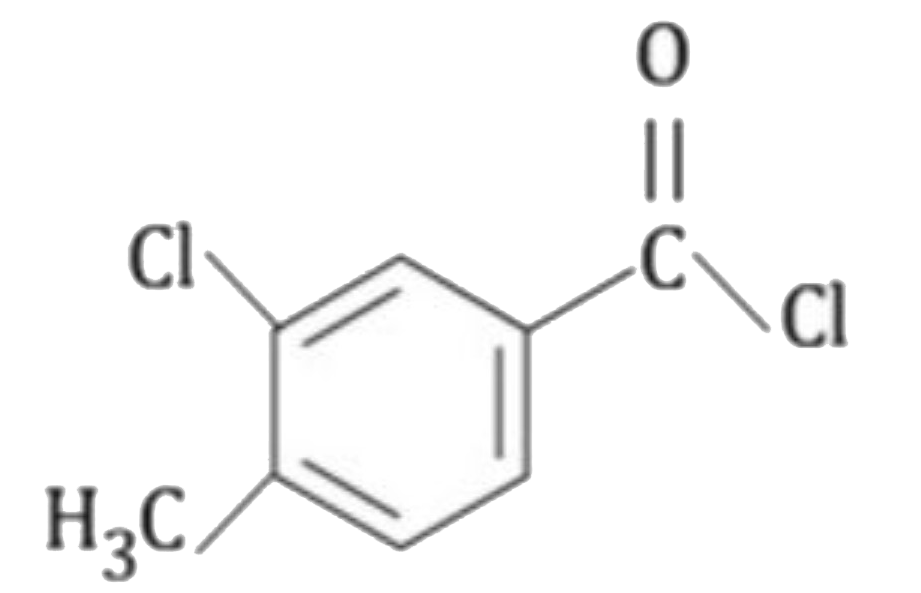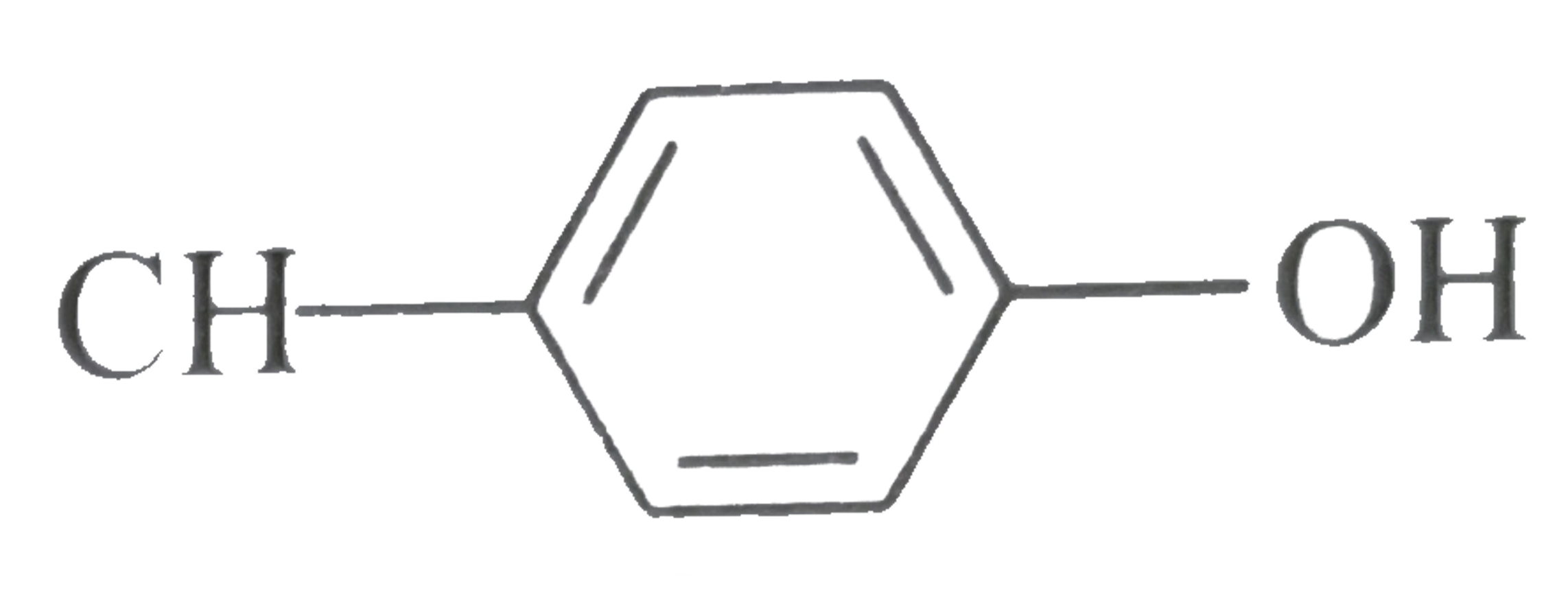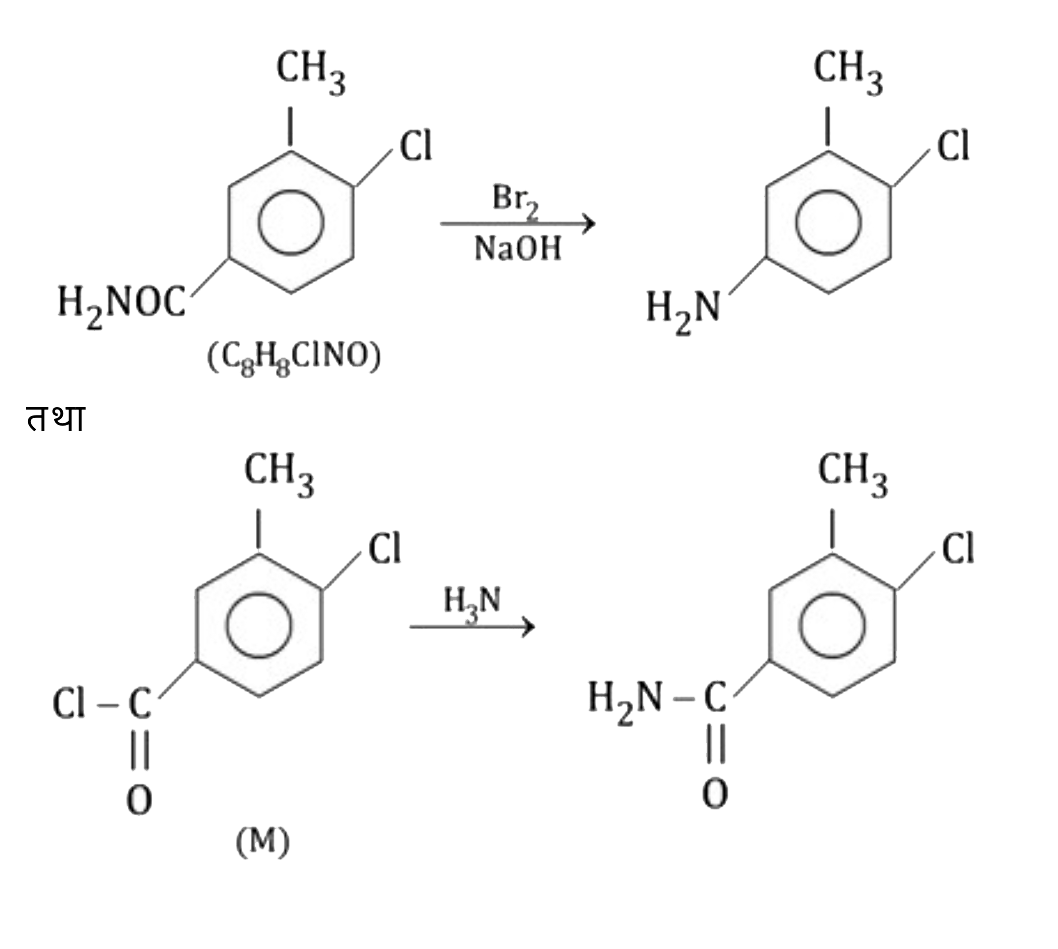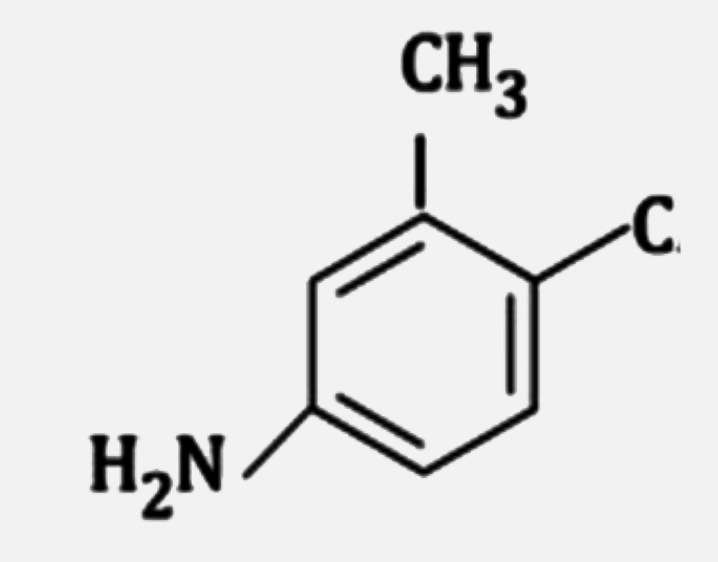underset((M))(C_(8)H_(6)Cl_(2)O) overset(NH_(3))to C_(8)H_(8)CINO overset(Br_(2)) underset(NaOH)to (##NTA_HIN_JEE_MN_TST_55_E02_016_Q01.png" width="80%">
A

B
(##NTA_HIN_JEE_MN_TST_55_E02_016_O02.png" width="30%">
C
(##NTA_HIN_JEE_MN_TST_55_E02_016_O03.png" width="30%">
D
(##NTA_HIN_JEE_MN_TST_55_E02_016_O04.png" width="30%">
Text Solution
The correct Answer is:A
|
Similar Questions
Knowledge Check
Consider the following :
" "underset((I))(CH_(3)CH_(2)NH_(2))," "underset((II))(CH_(3)overset(overset(O)(||))(C)NH_(2))," "(##GRB_HP_JEE_ORG_CHE_C01_E01_028_Q01.png" width="80%">
Correct order of their basic strength is :AI<II<IIIBII>I>IIICIII<II<IDII<III<IArrange the following carbanions in decreasing order of stability :
" "underset((P))(CH_(2)=overset(ө)(C)H)" "underset((Q))(Ph-overset(ө)(C)H_(2))" "underset((R))(CH_(2)=CH-overset(ө)(C)H_(2))" "(##GRB_HP_JEE_ORG_CHE_C01_E01_099_Q01.png" width="80%">AP>Q>R>SBS>Q>P>RCS>Q>R>PDQ>S>R>PArrange the following acids in decreasing order of acidity :
underset((X))(H-overset(overset(O)(||))(C)-OH)" "underset((Y))(CH_(3)-overset(overset(O)(||))(C)-OH)" "(##GRB_HP_JEE_ORG_CHE_C01_E01_118_Q01.png" width="80%">AX>Z>YBX>Y>ZCZ>X>YDZ>Y>X
Cl−O∣∣C−OC2H5−(1)'X'RMgX−−−−−−−−−→(2)NH4Cl3∘alcohol
View SolutionThe reaction of CH3CH=
 with HBr gives
with HBr gives
View SolutionIdentify number of chiral carbons in the following compounds.
H3c−CH∣OH−CH∣OH−CH2∣OH (II)(##GRBHPJ∃ORGCHEC02E01027_Q01.png width=80%><br>(IIII)H_(3)C- underset(CH_(3)) underset(|)(CH)-underset(CH_(3)) underset(|)(CH)-CH_(2)-CH_(3)
View SolutionThe reaction, C6H5CONH2Br2+KOH−−−−−−→ΔC6H5NH2 is called
View SolutionNH2−O∣∣C−NH2NaOH−−−→Cl2 Major product is :
View Solution


